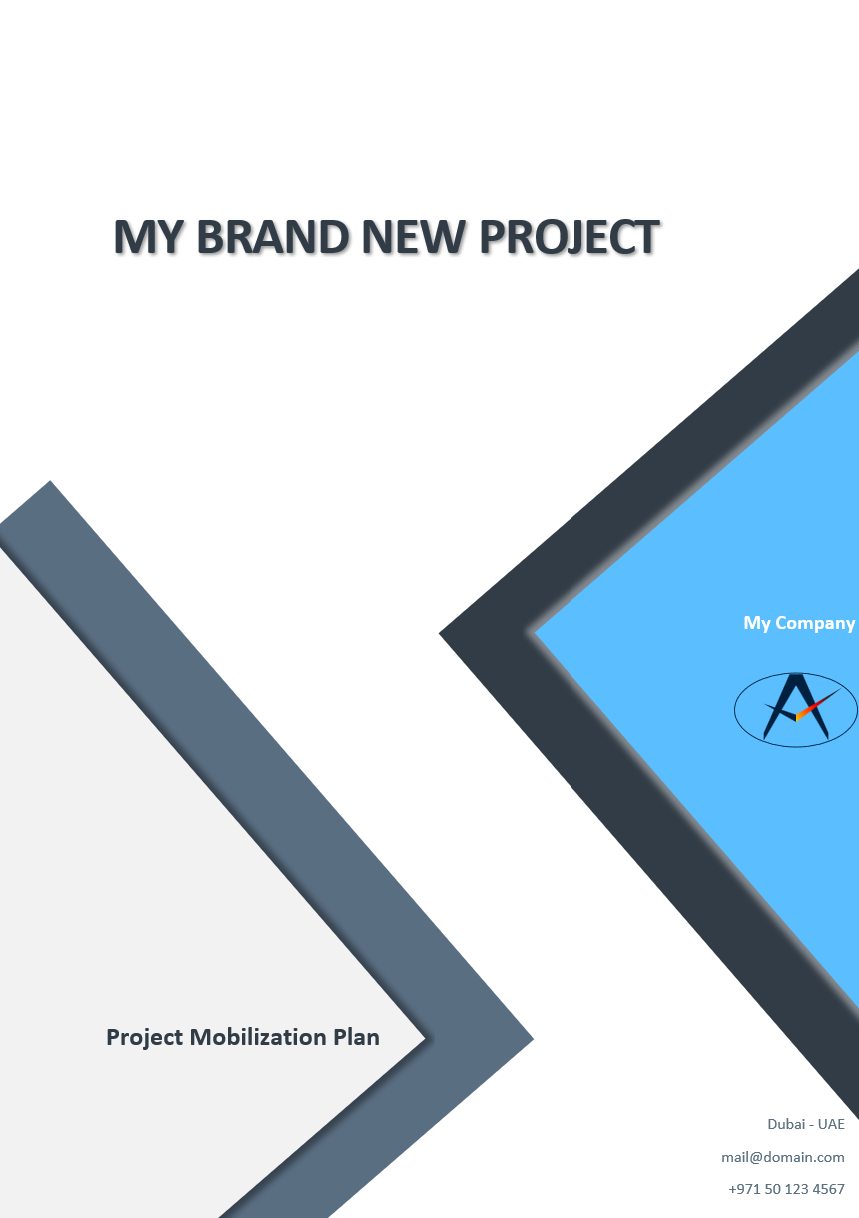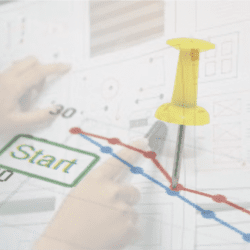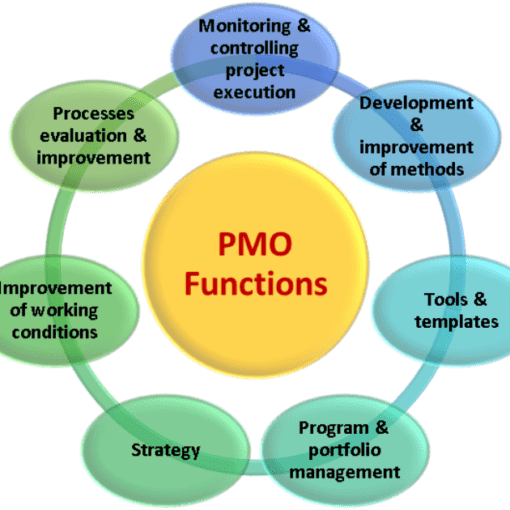Project mobilization in construction refers to the critical phase before the actual work begins on the site, involving the assembly of labor, materials, tools, and equipment required to start a project. This stage sets the groundwork for operations and includes tasks such as setting up temporary facilities, securing necessary permits, and finalizing contracts and schedules. It's a complex coordination effort that ensures all resources are in place to commence construction efficiently and safely.
The importance of a well-defined mobilization plan cannot be overstated. A comprehensive plan serves as a blueprint for action and is crucial for maintaining timelines, budget, and quality standards throughout the construction process. It aligns the project team with the project's goals and objectives, ensuring that everyone is prepared to execute their tasks effectively from day one.
Studies have shown that a robust mobilization plan can lead to a 20% reduction in overall project downtime, significantly impacting cost savings and project delivery timelines. This statistic underscores the value of meticulous planning in the early stages of a construction project.
What is a Construction Project Mobilization Plan?
A Construction Project Mobilization Plan is a comprehensive blueprint that outlines the strategic planning and execution of activities necessary to prepare a construction site for the commencement of work. It encompasses a range of preparatory actions, including the allocation of resources, equipment deployment, workforce organization, and site preparation, to ensure a smooth transition into the active construction phase. This plan serves as the foundational phase of a construction project, setting the stage for a seamless construction journey by addressing logistical, regulatory, and environmental considerations, and establishing clear roles, responsibilities, and timelines for all involved parties.
Key stages of a typical construction project mobilization process include:
- Initial Planning: This stage involves detailed planning of the entire project, including defining the project scope, objectives, and deliverables. It sets the groundwork for all subsequent mobilization activities.
- Resource and Equipment Allocation: Following the initial planning, the next step is to allocate and set up the necessary resources and equipment. This ensures that the right tools and materials are available at the right time and place.
- Site Organization and Preparation: Organizing the construction site is crucial and includes setting up site offices, storage areas, and ensuring that the site is safe and ready for the workforce and machinery.
- Monitoring and Adjustment: Continuous monitoring and adjustment are essential to address any issues that arise promptly and to ensure that the project remains on track according to the mobilization plan.
Each of these stages plays a pivotal role in the successful launch and execution of a construction project, paving the way for efficient and effective construction operations.
Benefits of a Detailed Construction Mobilization Plan
A detailed mobilization plan is a cornerstone of successful construction project management, offering numerous benefits that can significantly impact the project's outcome. Firstly, it reduces risks by identifying potential challenges and obstacles early in the project, allowing for proactive measures to be implemented. This foresight minimizes the likelihood of project delays and cost overruns, which are often the result of unforeseen issues. Secondly, a well-crafted mobilization plan enhances communication among all stakeholders. By clearly outlining the project's phases, responsibilities, and expectations, it ensures that everyone from the construction crew to the project managers and clients are on the same page, reducing misunderstandings and errors.
Cost savings are another critical benefit. A mobilization plan allows for the efficient allocation of resources, ensuring that materials and labor are available when needed and not lying idle, which can be costly. It also facilitates better scheduling, which can reduce the amount of overtime required and thus lower labor costs. Furthermore, a mobilization plan can improve site safety, a paramount concern in construction. By planning the logistics of equipment and material delivery, storage, and usage, the plan helps to prevent accidents and injuries, leading to a safer work environment.
Lastly, a detailed mobilization plan contributes to the overall quality of the construction project. With a clear roadmap, teams can focus on their work without the distraction of logistical concerns, leading to higher craftsmanship and attention to detail. This focus on quality can also enhance the project's reputation, leading to future business opportunities. In summary, a detailed mobilization plan is an invaluable tool that brings structure, efficiency, and clarity to the complex process of construction, ultimately leading to a successful project delivery.
Key Considerations for Building Your Mobilization Plan
Project Scope & Schedule
When embarking on a project, the mobilization plan is a critical component that sets the stage for success. It begins with a clear definition of the project scope, ensuring all stakeholders have a unified understanding of the project's objectives and deliverables. This clarity is complemented by establishing a realistic project schedule, which outlines key milestones and deadlines, providing a roadmap for timely completion.
Resources & Equipment
The next step involves a thorough assessment of resources and equipment. Determining the required manpower involves not just counting heads, but also understanding the specific skillsets needed to execute the project efficiently. This goes hand in hand with identifying and procuring the necessary equipment and materials, which must be done in advance to avoid delays.
Permits & Licenses
Permits and licenses can often be a complex task to navigate. Researching the necessary permits and licenses early in the project planning phase is crucial. Establishing a timeline for obtaining these permits ensures that all legal requirements are met without causing project delays.
Site Logistics & Safety
Site logistics and safety are the backbone of operational efficiency and workforce protection. Developing a site layout plan promotes an efficient workflow, allowing for seamless operations on-site. This is underpinned by the implementation of comprehensive safety protocols and procedures, which safeguard the well-being of all personnel and comply with regulatory standards.
Each of these aspects requires meticulous planning and attention to detail. The mobilization plan is not just a document; it's a strategic tool that, when executed effectively, can lead to a project's successful and timely completion while maintaining the highest standards of quality and safety. It's the blueprint for action that aligns resources, timelines, and operational procedures towards achieving the project's goals. With a robust mobilization plan, project managers can navigate the complexities of project execution with confidence, ensuring that every phase of the project is well-coordinated and aligned with the project's overarching objectives.
How My Project Mobilization Plan Template Can Help?
A well-structured Project Mobilization Plan is the cornerstone of successful project initiation. It outlines the critical steps to transition a project from its inception to its active phase.
Your Template, Your Solution
Download your mobilization plan template now
My comprehensive Project Mobilization Plan template is designed to address the key considerations that drive project success:
- Clear Objectives: Define the project's goals and deliverables with precision.
- Resource Allocation: Efficiently allocate human and financial resources.
- Risk Management: Identify potential risks and develop mitigation strategies.
- Communication Plan: Establish effective communication channels among team members and stakeholders.
- Timeline Development: Create a detailed project schedule to ensure timely execution.
- Quality Assurance: Implement quality control measures to maintain high standards.
Benefits of Using Our Template
By leveraging our Project Mobilization Plan template, you can:
- Save Time and Effort: Quickly create a professional and effective plan.
- Enhance Project Success: Increase the likelihood of project completion on time and within budget.
- Improve Decision-Making: Make informed decisions based on clear objectives and resource allocation.
- Mitigate Risks: Proactively identify and address potential challenges.
- Facilitate Collaboration: Foster effective communication among team members and stakeholders.
Don't let project mobilization hinder your progress. Empower your team with our user-friendly template and streamline your project initiation process.
Conclusion
A robust project mobilization plan is crucial as it lays the groundwork for a project's success, ensuring that all resources are aligned and ready for action from the outset. It acts as a blueprint, guiding teams through the initial and often most challenging phase of a project. For a deeper understanding and additional insights, consider delving into further resources available on our website or through other pertinent articles.
Built to Fail: Why Construction Projects Take So Long, Cost Too Much, And How to Fix It
Todd R. Zabelle delves deep into the chronic issues plaguing the construction industry in his book, "Built to Fail." He identifies the root causes of project delays, budget overruns, and inefficiencies that have plagued the industry for decades.
Key Points from the Book:
- The Broken Supply Chain: Zabelle highlights the industry's broken supply chain as a major contributor to project delays and cost overruns.
- The Separation of Planning and Doing: He criticizes the industry's tendency to prioritize administrative tasks over actual construction work.
- The Preoccupation with Administration: Zabelle argues that excessive bureaucracy and paperwork hinder productivity and innovation.
- The Need for a New Approach: The book advocates for a more streamlined and efficient approach to project delivery, emphasizing collaboration, lean principles, and technology.
Zabelle offers practical solutions to address these challenges, including:
- Improving communication and collaboration: Fostering open and transparent communication between all project stakeholders.
- Adopting lean construction principles: Eliminating waste and inefficiency in the construction process.
- Leveraging technology: Utilizing advanced technologies to improve project planning, execution, and monitoring.
- Empowering frontline workers: Giving construction workers more autonomy and decision-making power.
By understanding the underlying issues and implementing these practical solutions, construction professionals can significantly improve project outcomes and reduce costs.












